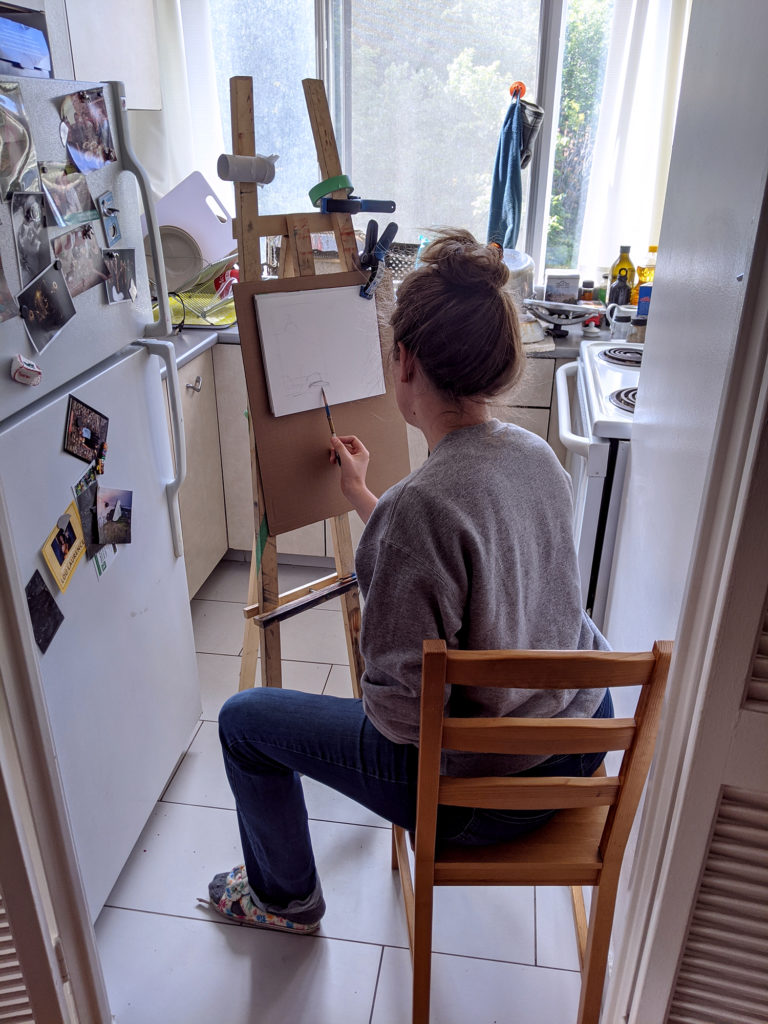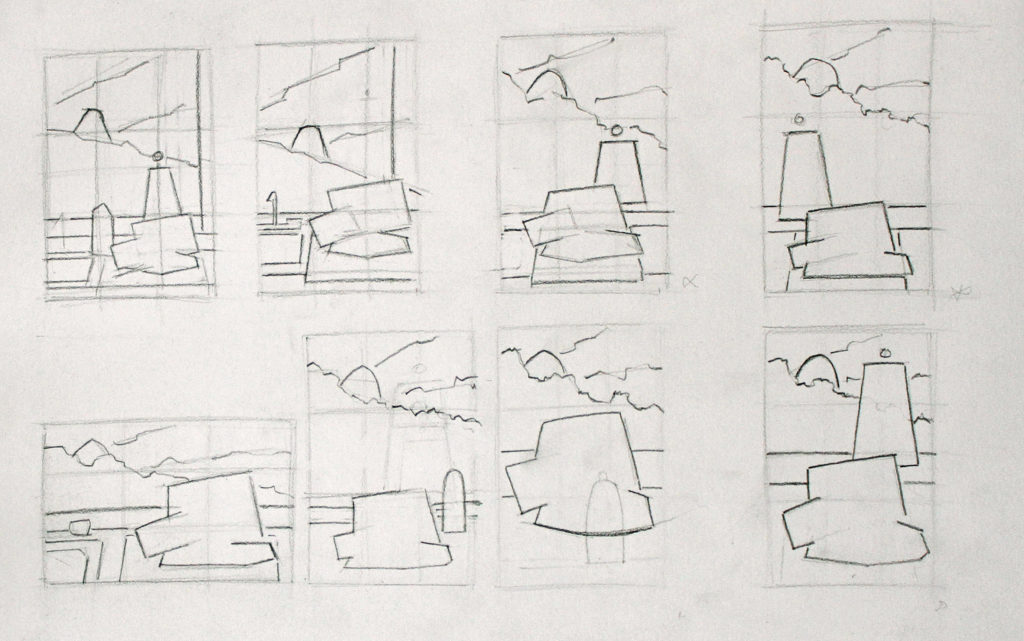Rokeby Museum Distance Drawing Course — Week 6: Illustration

WEEK 1 | WEEK 2 | WEEK 3 | WEEK 4 | WEEK 5 | WEEK 6
Inspired by Rachael Robinson Elmer (1878–1919) and taught by Courtney Clinton, Rokeby Artist in Residence
Dear Student,
Courtney Clinton here, Artist in Residence at Rokeby Museum.
After four great months, my residency is coming to an end this week. Yup, that’s right. This is our last letter! I’m so grateful to Catherine Brooks and the museum for giving me this opportunity. Allison Gregory, Education and Interpretation Fellow, has been an incredible collaborator. She has made sure, despite the border closure, I always have digital access to the museum’s archive!
Together, we have explored not only the lessons of a 19th century drawing course, but also the artistic journey of one of its students, Rachael Robinson Elmer (1878–1919).
Hopefully what has come through with this course is the relationship between engaged observation and the art of drawing. This conception of drawing as a kind of visual research is very different to our modern understanding of art as an expression of self.
With our final lesson, I would like to bridge these two understandings of art and show how we can use the tools that we have developed throughout the course to unlock our creative voice. In this week’s letter, we will explore the production of Rachael’s chef d’oeuvre, her fine art postcard series, Art Lover’s of New York, part of the National Gallery of Art, in Washington, DC. And as an homage we will design our own fine art postcard.
Exploring the Museum’s Collection
At the start of the new century, Rachael was at the height of her career. After two decades of hard work she was now a successful book illustrator living in New York City. In 1910, with the money she had earned from her illustrations, Rachael traveled to Europe to study art, visiting France, Italy and England.
Shortly after her return a friend sent her a postcard from England.

Oh Rachael, This is true, save the lights waver and change in the flowing water. Will thee do something like these for New York? Our city is surely as lovely, and thee could serve it well.
— Postcard to Rachael Robinson Elmer (1878–1919), 1910, Box 62, Image 3968y
The turn of the century was an exciting time for postcards, in fact 1900 to 1918 is considered the “Golden Age of Postcards.” When I first read this, I will admit that I laughed sarcastically. I didn’t think of the postcard as something worthy of a “Golden Age.” I associate them with the tacky tourist shops that litter otherwise beautiful sites.
But the more I read about the history, the more I came to understand its meaning and significance to Rachael and her contemporaries. For people of this period, the postcard was a new source of diversion, a record of community life, and a symbol of modern innovation.
The first postcards were invented in Austria in 1869. In the beginning, they were used by the state government to disseminate information to the population. In 1893, the illustrated postcard made its first appearance in the United States at the World Columbian Exhibition in Chicago, Illinois. Postcards became an instant hit and by the turn of the century they were a kind of phenomenon! (Jaque Poitras, Carte Postale Québecoise, 1990)
To understand the impact of the postcard, one needs to understand that written correspondence was an important source of entertainment for people from this period. The postcard allowed writers to incorporate images into their letters, bringing a new modern element of fun to this leisure activity.
At the height of the postcard craze in 1914, Rachael set out to produce her own series.
Fresh from her trip, she looked to Europe for inspiration. In Europe, postcards were not only a source of mass entertainment they could also be works of fine art. Important French illustrators like Jules Chéret (1836–1932) and Alphonse Mucha (1860–1939), produced their own hand painted postcards.
Postcard Production

Rachael’s postcard series, “Art Lover’s New York” was a series of 12 postcards that captured important New York sites in a style that borrowed from Art Nouveau and Impressionism. The cards were produced in watercolour and incorporated calligraphic ink lines — a nod to Rachael’s early pen and ink education with Ernest Knaufft (1864–1942).
She started serious work on the series in January of 1914 and submitted the 12 illustrations for publication to the P.F Volland Company, a Chicago publisher, in August of that year. It was a major undertaking and we are privileged to have a record of her process in Rachael’s letters to her mother, Ann Stevens Robinson (1841–1920).
Rachael started her production process with a research and experimentation phase. This meant exploring New York and making rough field sketches of different locations and compositions.

Saturday I worked until the middle of the afternoon when I went down to walk across the Bklyn. Bridge and look for a sketch for a post-card. Got fairly blown to pieces on my walk across, but loved it.
— Rachael Robinson Elmer to Ann Stevens Robinson, February 9, 1914, Middlebury Special Collections and Archives, Box 28, Folder 17
With those rough sketches worked out, Rachael set out to find a publisher for her project. Rachael was an ambitious artist, it wasn’t enough for her to make art, she wanted it to be seen!
Although she was an established illustrator, finding a publisher for this personal project was not easy. In a later interview she joked, “I wore three pairs of shoes taking the designs around to publishers before P. F. Volland Company (in Chicago) finally accepted them” (Straw, Postcard Collector Magazine, 2006, 40).
In March of 1914, the project was accepted by a publisher and Rachael started developing her rough sketches into a series of more formal illustrations.

In preparation for her in studio work, Rachael made plein air oil paintings to capture the colours and atmospheres of her cityscapes. She also learned the new photographic medium and took her own reference photos.
I have [illegible] Carl Willis’s camera and am getting snapshots on any clear day. Out of twenty there may be [illegible] or seven that I can use. Having never done this sort of thing before I feel rather anxious about it. But if these are successful, it will mean a lot more of the same thing.
— Rachael Robinson Elmer to Ann Stevens Robinson, March 12, 1914, Middlebury Special Collections and Archives, Box 28, Folder 18

Back in the studio, Rachael started to experiment with different designs based on her source material. She developed her designs through a series of thumbnail sketches she made in her sketchbook. In these small scale images, she played with composition, value and colour. She made lots and lots of these small studies before moving on to the final image.
Only after all of this preliminary work did Rachael produce her final images!
In 1916, Rachael produced a second edition of her postcard series. In this second edition she took the design element of her illustrations even further. Using the linocut print method she abstracted her cityscapes and reduced the different parts into a series of flat colour shapes.
In the design stage of this second series we see more clearly how Rachael is experimenting with colour and composition. For this series, she used the same reference material she had originally collected, two years earlier. By repeating a previous subject, Rachael used the project to experiment and expand her artistic voice.

Rachael made countless studies using different colour patterns and playing with composition. She used these studies to experiment and develop her voice.

For me it’s interesting to consider all of the preliminary work that went into the production process of both series.
For these projects Rachael broke the production process down into smaller (more manageable) parts. In a way this method mimics her drawing process more generally. Through her teacher Ernest Knaufft, Rachael learned to break drawings down into a series of steps.
In today’s exercise we will produce our own pandemic-themed postcard and we will use Rachael’s process to help guide us as we seek out our own creative voice.
Drawing Exercise
For most of us, this period has meant staying close to home. For this week’s exercise I invite you to design a postcard illustration of your home or apartment. What is the most iconic view in your home?
I don’t want you to worry too much about the subject. Our focus with the project is to work through Rachael’s production process. I want you to use this series of studies to experiment and think about how you can use these tools to find your personal creative voice.
Note: As you work your way through this exercise, share your work! Be sure to tag @clinton.courtney and @rokebymuseum on Instagram and use the hashtags #RokebyDistanceDrawing and #DrawingWithRachael. Got a question for Courtney? Let us know in the comment section below!
Setup
For the first part of this exercise I want you to continue to work with pencil (2B or 6B) and paper (at least 9 x 12 inches). When you get to the second step I encourage you to choose your own materials and experiment!
Reference Sketching
As an artist it’s really easy to get stuck in your head. We come up with a million different ideas but we talk ourselves out of them before anything makes it to the page. For this exercise I forced myself to do all of my thinking on the page.
I had a couple ideas of fun images for my postcard. Before self doubt set in, I grabbed a sketchbook and I started making a series of small sketches.
I Kept these sketches nice and loose. Try to think about it like a kind of note-taking. No full sentences, just enough information to communicate the idea.
In total I did three of these rough apartment sketches. I was really excited about the bathtub sketch, but once I saw it on the page I found it a bit dull. Most of the image is the same light value.
Of the three, I really liked the kitchen sketch. I liked the contrast between the outdoor landscape and my pots and pans.
Thumbnails
With a subject chosen, I wanted to come up with an interesting design for my image. Like Rachael I used the thumbnail technique to figure out the best placement and value composition for my illustration.
To start I got a printer sized piece of paper and I filled the page with small thumbnail sized rectangles. These small boxes represent my postcard. With each new drawing I moved the different elements around. I also added and subtracted elements. Working small forced me to keep my drawings simple. I think in terms of the main shapes — no detail. I kept my drawing really simple.
There are a couple interesting designs here but I decided to go with the fourth drawing (top right). I’ve moved my pots and pans to the center and got rid of the sink. Now the focus of the image is the contrast between my dishes and the forest in the background.
Next, I repeated the same thumbnail exercise but this time I kept the placement fixed and instead I experimented with different value compositions. Before I started, I created a four-step value scale to guide my compositions.
Later, I add nuance to my shading to give a sense of form. For now I’m only interested in the general value of my different objects. With these drawings I limited myself to only four values (white, light gray, dark gray and black).
To create an image with an interesting sense of contrast it is useful to keep your different values grouped together. I had some fun and I created new value shapes by grouping objects. In the first thumbnail, I kept the background nice and light and the wall behind my pots a step darker. It didn’t work. The wall looked like a stripe and created an unnecessary cut in the composition. I tried grouping the wall with my pots — still felt like a cut in the composition. In the next iteration I combined the forest background and the wall by making them the same value.
For the first three compositions I grouped the towel and my three pots. On the fourth drawing I separated one of the pots from the group by making it darker. It gave the composition more life and a sense of movement. To exaggerate the contrast, I flipped the light gray of my background with the mid tone gray of my pots. Now my darkest tone was offset by a light gray. I found my composition!
So far in this course we have worked predominantly with graphite pencils. For this exercise, I encourage you to experiment with different mediums for your final illustration.
Inspired by Rachael’s student work, I really wanted to do something with pen and ink. Still working thumbnail size, I did a series of rough drawings of my composition in pen and ink. With these drawings I was working out texture, line direction and line thickness. One of the things I love about Rachael’s art is how she plays with thick and thin lines!
Final Postcard
With all of this research, the last step was to put it all together in a final drawing! First I did a formal pencil drawing of my still life set up. With this drawing my objective was to make sure I had all the information necessary to do a detailed final drawing. I worked out the design in the thumbnail stage. In this drawing I made sure I had the right proportions, structure and shading.
I retraced this drawing onto a smooth piece of watercolour paper and inked my drawing using a thin and fat marker.
The final stage was about refinement. I worked out all of my major decisions in the thumbnail stage. I find that if I put enough time into the preliminary stage the last step just falls into place!
Signing off
With this lesson I wanted to show you how you can use a systematic approach to unlock creativity. I like this rational approach to art making because it feels more accessible. When we talk about art and creativity in abstract terms it can feel exclusive — like you have to be in the know to get it. With this course I wanted to invite more people to take up art and see themselves as creative.
I’m so grateful to all of you who have participated in this project. We have received so many really incredible drawings from people who have joined the course and posted their work under the #RokebyDistanceDrawing hashtag.
It’s been a real joy to research and write about Rachael and even more fun to work through these weekly lessons with you all!
Very Respectfully yours,
Courtney Clinton
P.S. Looking to the future, I hope to build on Rachael’s postcard series. In the time of COVID I see the postcard as one way to disseminate art while galleries are closed. In the 1960’s another New York artist, Ray Johnson (1927–1995), developed a Postal Art practice. Instead of showing his art in galleries, he would share it with fellow artists through the mail. Throughout the sixties and seventies he built up networks of postal artists.
Over the coming months I want to explore and experiment with this format! As always I will share updates on my instagram at @clinton.courtney.
Rokeby Museum hopes that you have enjoyed this 6-part series from artist in residence Courtney Clinton. Please consider a donation, if you can, to help us continue to offer programs like this.
 Rokeby Museum
Rokeby Museum















Thank you so very much for sharing Rachael’s life, studies, and art with us. It inspires me and my continuing study of urban sketching. The museum held an exhibit of her work in 2014 and was selling her postcards then. Do you still have postcards to sell?
Best wishes in your studies, Courtney and Allison.
Jeanne
Hi Jeanne,
Thanks for your kind words. We’re certainly proud of Courtney and Allison’s work to share more about Rachael’s life and work, and we’re glad that you found inspiration!
Yes! We have plenty of the reproduction sets available for sale. If you want to email admin@rokeby.org or call us at 802-877-3406, we can help you out!